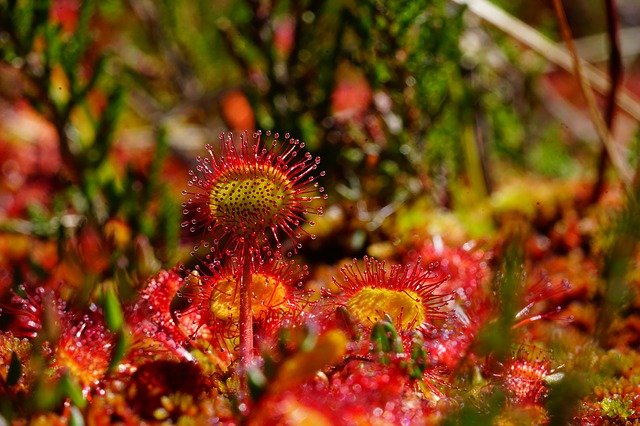
Sundew is a medicinal herb with numerous therapeutic properties that is grown all over the world for medicinal purposes. Let’s find out better.
Properties of the sundew
Drosera is a plant with an antispasmodic, bronchosedative, antiseptic, decongestant, anti-inflammatory and expectorant action, thanks in particular to the principles it contains, such as: naphthoquinones, glycosides, essential oils, flavonoids, anthocyanins, proteolytic enzymes, tannins, resins, minerals, citric acid and malic acid.
All these phytocomplexes are contained in the leaves, in particular, sundew, which is a substance used as a calming agent for different types of cough, in particular the angry cough.
In fact, it is thought that Drosera rotundifolia is able to act in particular as a calming agent of the smooth muscles of the bronchi (and it seems also of the intestinal one).
How to use
The used parts of the sundew are all the aerial parts that are harvested in the summer. The sundew is used fresh or dried in a ventilated, warm and dark place. With the sundew you can make an infusion used for cough and inflammation of the respiratory system in general, also demonstrating a slight antibiotic property.
How to prepare the sundew infusion – Combine 250 ml of boiling water with a teaspoon of the plant, leaving it to rest for 10 minutes. Filter and consume up to 4 cups a day.
On the market there are several cough remedies that contain extracts or tinctures of sundew, also associated with other plant extracts that have a mucolytic action.
Sundew is not used in cooking due to its sour and bitter taste.
Contraindications of sundew
Sundew can have some side effects, so consult a doctor before taking it. This, in fact, will be able to indicate the drugs with which the sundew could interfere (such as those for hypertension or infectious diseases), and establish the right dosage to avoid urinary tract problems. Leaf sap can also cause skin irritation.
Description of the plant
The sundew ( Drosera rotundifolia ) is a herbaceous plant of the Droseraceae family. Also known as a carnivorous plant, it is actually an insectivorous plant that captures its prey via sticky secretions.
The sundew can reach a height of about 20 cm, has obovate leaves with a long petiole and long tentacles with purple hairs. The latter are responsible for the secretion of a viscous liquid used to trap small insects.
The sundew flowers are small and white and bloom in spring, while in winter the plant closes in a sort of hibernacle to face the rest period.
Habitat of the sundew
Drosera rotundifolia is also known as Rosolida or Dew of the Sun. Native to North America, it can currently be found throughout the northern hemisphere.
It grows in humid and cool places, such as swamps, peat bogs and alpine pastures, up to altitudes of 1600 m.
It is adapted to live in places with few nutrients, thanks to its system of capturing small animal prey.
Background

In popular use, the fresh juice of the sundew is used against warts, but it must be applied carefully, since the sap of the leaves, in contact with the skin, can cause irritation and redness. Furthermore, Drosera seems to have the ability to curdle milk.






